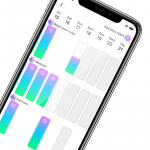Being one-man-army working on an app has some advantages. There is no deliberation about code formatting, libraries or frameworks used in the project. This is why migrating from react-native to Flutter was an easy decision, I just didn’t need to convince anyone apart from myself ;).
Of course all of those pros are also the cons. There is one that could prevent me from making bad decisions, checking in a bad code or braking old features while implementing new one. There is no one to deliberate about algorithmic, implementation and architectural choices in code review… you get the point?
There are some ways how some of those down sides may be overcome. For example writing unit and functional/integration tests is one of them. Code formatter and analyzer are another two.
Thankfully Flutter comes with all of the bells and whistles. There is flutter format, to automatically format your code, and flutter analyze to analyze code and enforce quality. Even more, both tools comes with awesome pre-build configurations that are used by Flutter team.
Unfortunately there is nothing that would automatically write test for you ;). But fortunately there are high quality and performant test frameworks that lets test your code on:
- unit,
- widget (functionality),
- widget (presentation),
- integration
levels.
One thing is to have the tools, but another is to use them… When you are part of a bigger team, someone will configure a build and CI/CD system for you, that probably will be running in the cloud. Or you can use something like CodeMagic… But in my situation I try to limit external services that I use with HabitChallenge.
One thing that I loved in my react-native times, was husky project. That lets you easily define and manage git hooks, especially pre-commit hook. This way I was able to run google typescript and unit tests before each commit.
Back in August 2019, there was nothing that may be compared to husky in dart/flutter ecosystem. So I decided to go with a general solution, the pre-commit project. Lets see how we can leverage pre-commit to ensure our code is properly formatted, doesn’t break any analyzer rules and do not break existing unit tests.
Continue reading
